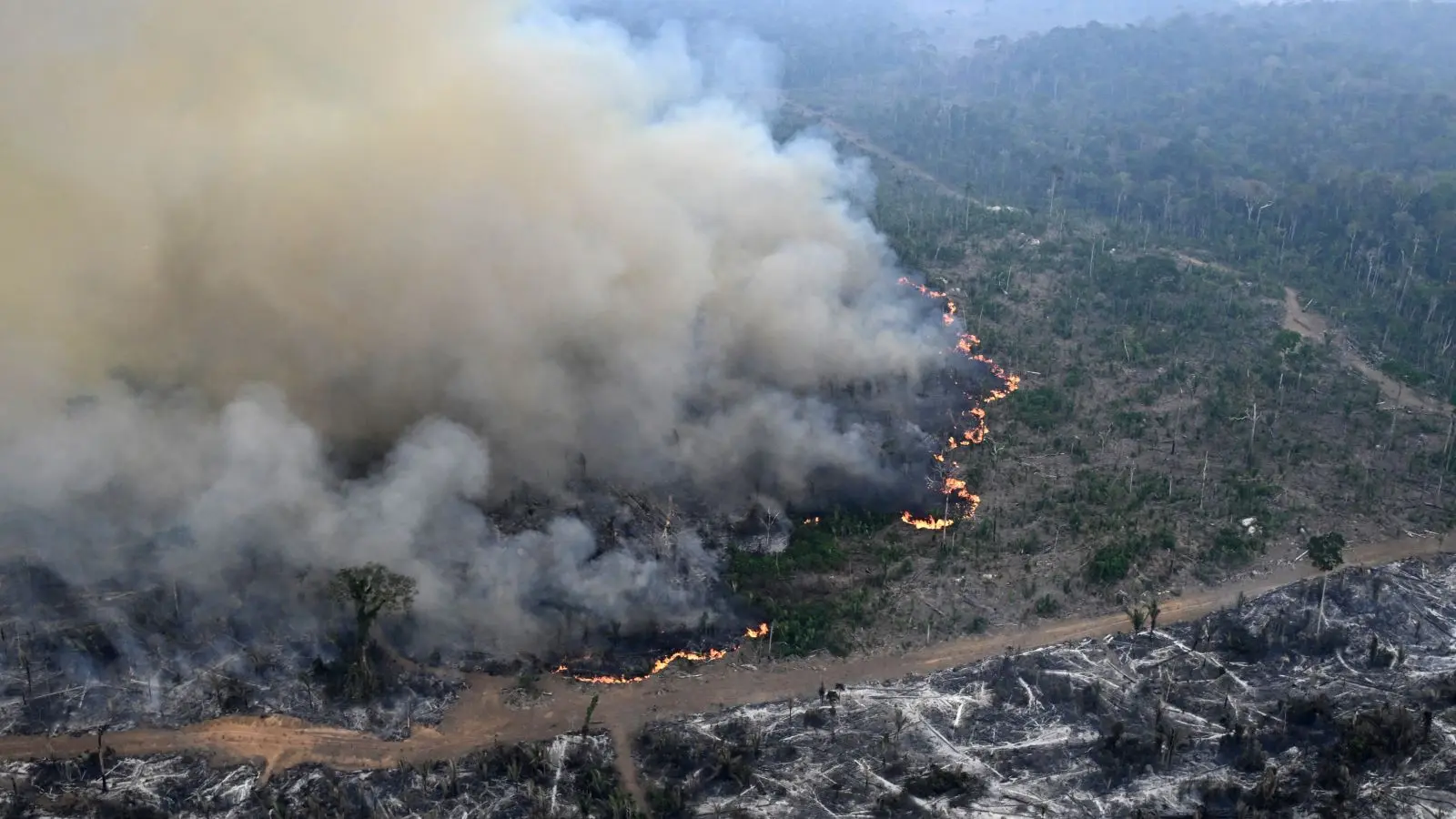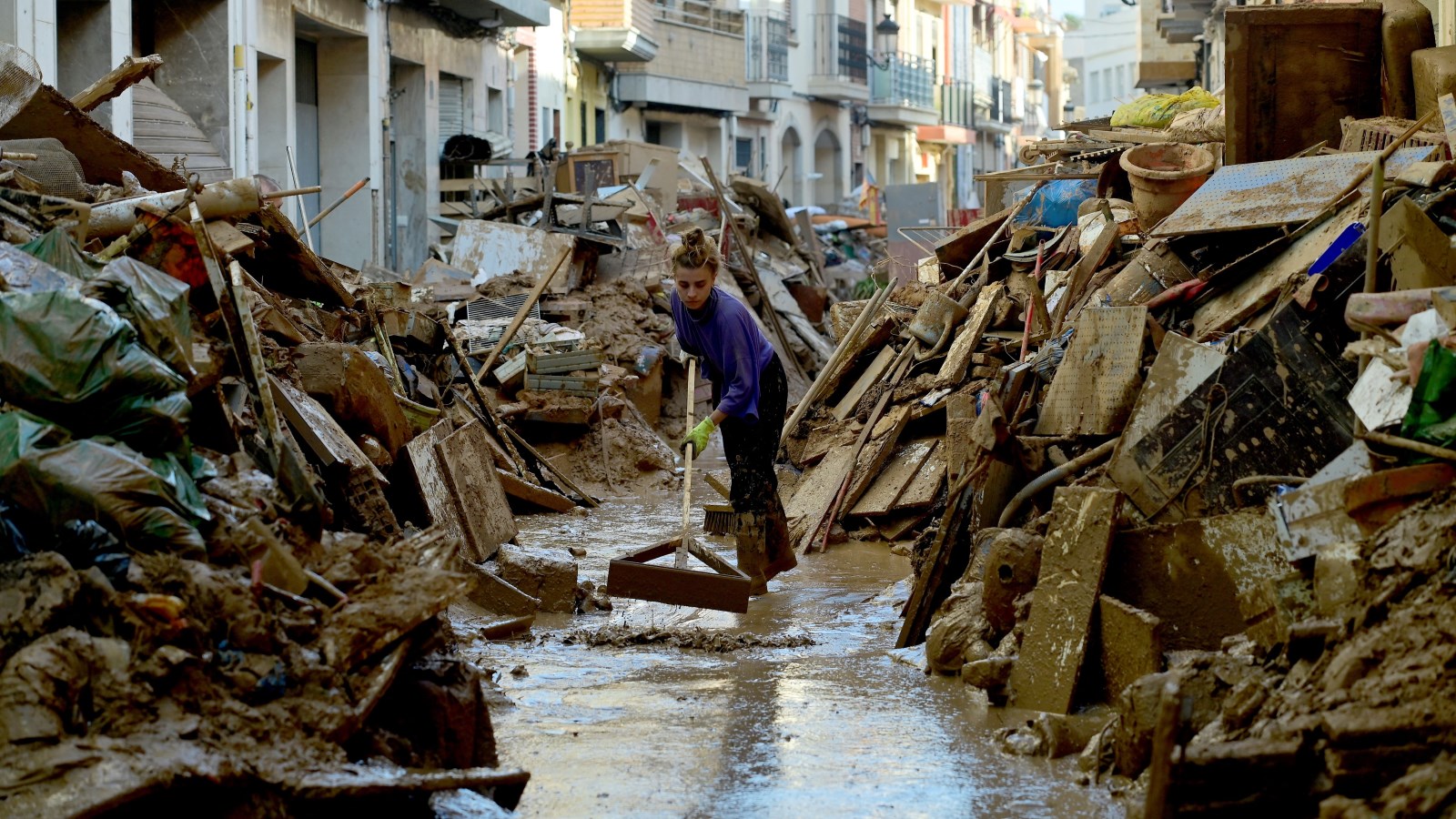Nine months ago, the oceans became bathwater. As historically hot sea temperatures forced corals to expel the microorganisms that keep them alive, the world endured its fourth mass coral bleaching event, affecting more than half of all coral reefs in dozens of countries. As the temperatures continued to climb, many died.
It was an early taste of what would become a year marked by the consequences of record-breaking heat. And now it’s official: Last week, when much of the world’s attention was turned to the U.S. presidential election, scientists from the European Union’s Copernicus Climate Change Service crowned 2024 as the hottest year on record — and the first year to surpass the 1.5 degrees Celsius benchmark. And that’s with two months left to go in the year.
“This marks a new milestone in global temperature records and should serve as a catalyst to raise ambition for the upcoming climate change conference, COP29,” said Samantha Burgess, Copernicus’ deputy director, in a press release. Burgess called the announcement “virtually certain” because, barring an extreme event like a volcanic eruption that blocks the atmosphere’s excess heat, it’s nearly impossible for temperatures to fall enough for 2024 not to break the record.
It’s against this backdrop that world leaders, policymakers, and activists are descending on Azerbaijan for the 29th United Nations Climate Conference of the Parties, to tout their new climate goals and negotiate funding for vulnerable countries affected by climate change. Back home, many of their countries will still be recuperating from this year’s floods, fires, and other natural disasters. At the last conference in December 2023, governments agreed to reduce greenhouse gas emissions with the aim of trying to limit global warming to 1.5 degrees C above preindustrial temperatures.
“2024 is the hottest year on record, and nothing can change that at this point,” said Zeke Hausfather, a climate scientist at Berkeley Earth, which, due to slight variations in their model, found last year exceeded 1.5 degrees C, too. “It’s not about a single year passing that that 1.5 level. It’s more important to consider the longer term average of human contribution to climate change.”
There are half a dozen groups, including Berkeley Earth, Copernicus, and NASA, that calculate the progress of global warming, and each has its own approach to filling in data gaps from the beginning of the century when records were less reliable, leading to different estimations of how much the Earth has warmed since then. The average of these models is used by international scientific authorities like the Intergovernmental Panel on Climate Change and the World Meteorological Organization. This is the first year, Hausfather said, that this communal average also shows the 1.5 C threshold has been passed.
“1.5 degrees is not a magic number. Each degree matters,” said Andrew Dessler, director of Texas A&M University’s Texas Center for Climate Studies. Because each part of our climate system has different thresholds for tolerating the excess heat, small changes in temperature can have major consequences and push ecosystems past their tipping points. “The world is engineered for the climate of the 20th century,” he said, “and we’re just now exiting that climate. We’re maladapted.”
Global warming alone can’t account for all the excess heat from these past two years. At least some of the supercharged temperatures and the disasters they catalyzed can be chalked up to a strong El Niño — a cyclical upwelling of warm water in the Pacific Ocean that shifts weather patterns across the globe. Although the most recent El Niño cycle was expected to give way to the cooler La Niña pattern this summer, the heat has persisted into the end of the year.
Once El Niño’s effects ease up, there’s a chance that coming years may dip back below the 1.5 C mark. Hausfather noted that only once the planet’s temperatures have remained above the 1.5 degrees C threshold for a decade or more will scientists consider international emissions agreements to be breached. “A big El Niño year like this one gives us a sneak peek as to what the new normal is going to be like in a decade or so,” he said.

Evaristo Sa / AFP via Getty
And the new normal isn’t pretty. In addition to the widespread demise of coral reefs, the year brought record-setting heat waves in the Arctic and Antarctica that melted sea ice to near historic lows, stoking concerns that sea levels would rise faster than anticipated. During summer months, some 2 billion people, a quarter of all humans on Earth, were exposed to dangerously hot temperatures, including 91 million people in the United States and hundreds of millions in Asia.
The extra heat fueled disasters throughout the year. Deadly wildfires raged in South America, burning millions of hectares across the Amazon Basin and Chile. Arctic forests in Russia and Canada went up in flames too, spewing record amounts of carbon into the atmosphere. Catastrophic flooding killed hundreds in Spain, Africa, and South Asia. And recently, hurricanes Helene and Milton, catalyzed by hot ocean temperatures, tore through the Caribbean and the U.S. South. Meanwhile, droughts gripped communities on nearly every continent.
“Those impacts are unacceptable. They’re being felt by those who are most vulnerable, which also happen to be, in general, those that are least responsible,” said Max Holmes, president and CEO of the Woodwell Climate Research Center.
At the U.N. conference in Azerbaijan, organizations like the Woodwell Climate Research Center and the World Wildlife Fund are given a platform to speak directly to country representatives and showcase their research on climate change. There, activists hope that wealthy countries shore up their commitments to support poorer countries in their efforts to cope with the climate crisis, develop clean energy, and restore ecosystems.
“People shouldn’t think the game is over because we passed 1.5 degrees,” Dessler said. “The game is never over.”
Correction: An earlier version of this article misspelled Max Holmes’ name.




